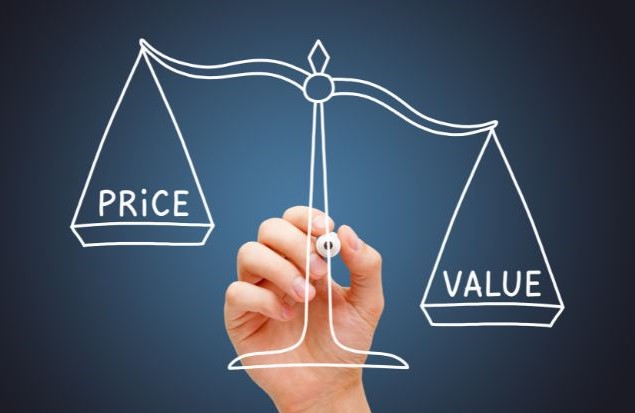

Pricing Strategies for Creators: Finding the Sweet Spot
Introduction:
For creators who invest time, skill, and passion into crafting or designing their own products, determining the right pricing strategy is a critical aspect of successful online selling. The challenge lies in finding the sweet spot – a price that is attractive to customers while ensuring profitability for the creator. This article delves into effective pricing strategies tailored for e-sellers, particularly those on platforms like Etsy, offering insights on how creators can strike the perfect balance to drive sales and sustain a thriving online business.
Understanding the Cost Structure:
1.Material Costs:
Evaluate material costs. Factor in the expenses incurred for the raw materials used in creating your products.
2.Labor and Time:
Consider labor and time investments. Assign a value to the hours spent on designing, crafting, and finishing each product.
3.Overhead Expenses:
Account for overhead expenses. Include costs related to utilities, workspace, tools, packaging, and any other overhead necessary for your business.
GET EXCLUSIVE ACCESS TO OUR EXPERTS CREATOR'S CORNER TIPS AND ADVICE:
- Get AHEAD of the Competition.
- FREE Membership to Mia’s Weekly Insiders secrets.
- FREE tailored resources and gifts.
- PLUS qualify to receive personal email support.

* We respect your privacy. We will not spam you.
Determining Your Desired Profit Margin:
1.Profitability Goals:
Define your profitability goals. Consider the percentage of profit you aim to achieve for each product sold.
2.Balancing Profit and Affordability:
Strike a balance. Ensure your desired profit margin aligns with what customers are willing to pay, creating a win-win scenario.
Market Research and Competitor Analysis:
1.Research Similar Products:
Explore similar products on the market. Analyze the pricing strategies of competitors to understand the prevailing price range for comparable items.
2.Identify Unique Selling Points:
Identify your unique selling points. If your creations offer distinct features or superior quality, this can justify a premium price.
Value-Based Pricing:
1.Emphasize Value Proposition:
Focus on your value proposition. Highlight the value, uniqueness, and quality of your creations to justify a higher price.
2.Educate Customers:
Educate customers about the craftsmanship involved. Share the intricate details, design process, and the personal touch that goes into each creation.
Tiered Pricing Models:
1.Create Pricing Tiers:
Implement tiered pricing. Offer different versions or packages of your products at varying price points to cater to a wider audience.
2.Bundle Pricing:
Consider bundle pricing. Combine related products or variations into bundles, providing a perceived value for customers purchasing multiple items.
Promotional Pricing Strategies:
1.Limited-Time Discounts:
Introduce limited-time discounts. Create a sense of urgency to encourage quick purchases, especially during promotional periods or holidays.
2.Rewarding Loyalty:
Implement loyalty programs. Reward repeat customers with exclusive discounts, early access to new products, or other special perks.
Dynamic Pricing:
1.Adjusting Prices Strategically:
Use dynamic pricing strategies. Adjust prices based on factors like demand, seasonality, or the introduction of new features or variations.
2.Flash Sales and Special Events:
Incorporate flash sales. Create excitement by offering short-term discounts during special events, celebrations, or product launches.
Calculating Wholesale and Retail Prices:
1.Wholesale Pricing Formula:
Develop a wholesale pricing formula. Determine the cost structure and desired profit margin when selling in larger quantities to retailers or other businesses.
2.Retail Markup:
Apply a retail markup. Establish a percentage by which you’ll mark up the wholesale price to arrive at the final retail price for individual customers.
Testing and Iterating:
1.Monitor Sales and Customer Response:
Track sales performance. Observe how customers respond to your pricing strategy and use sales data to inform future pricing adjustments.
2.Solicit Customer Feedback:
Gather customer feedback. Directly ask for input on pricing, and use their insights to refine your approach.
Accounting for External Factors:
1.Economic Conditions:
Consider economic conditions. During economic downturns, customers may be more price-sensitive, requiring adjustments to maintain competitiveness.
2.Shipping and Handling Costs:
Factor in shipping costs. Be transparent about additional costs associated with shipping and handling, adjusting prices accordingly.
Transparency in Pricing:
1.Clear and Honest Communication:
Practice clear communication. Transparently convey the factors influencing your pricing to build trust with customers.
2.Incorporate Value-Added Extras:
Include value-added extras. If possible, provide additional perks such as free shipping, extended warranties, or personalized packaging to enhance perceived value.
Legal and Regulatory Considerations:
1.Compliance with Local Laws:
Ensure compliance with local laws. Familiarize yourself with regulations related to pricing, taxes, and consumer protection in your target markets.
2.Account for Transaction Fees:
Account for transaction fees. Deduct any fees associated with the e-commerce platform or payment processing from your final revenue calculations.
Conclusion:
Pricing for e-sellers is an intricate dance between cost considerations, customer expectations, and market dynamics. By adopting a strategic approach that incorporates a thorough understanding of costs, competitor analysis, and customer value perceptions, creators can find the sweet spot that maximizes profitability while appealing to their target audience. Regularly evaluate and adjust pricing strategies, and don’t hesitate to experiment with different models to discover what works best for your unique creations.
MORE LIKE THIS...
Bringing you the latest information, ideas, products and services for your E-commerce business.
Copyright 2024 E-Market Pulse
Contact Us
We may receive compensation from partners listed through affiliate partnerships, at no cost to you. This doesn’t influence our ratings, and the opinions are our own
Subscribe to our Newsletter
Get updates on products and services specially targeted to help you succeed.
